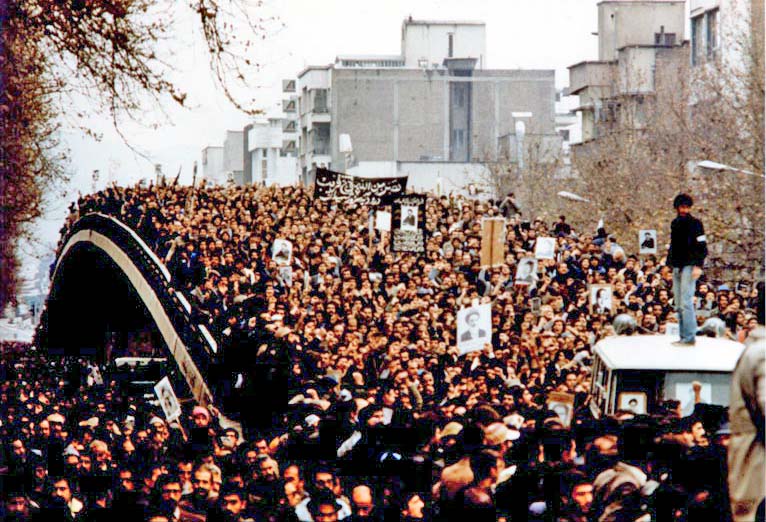The Iranian Revolution
The Foundation of an Oppressive Government.
In 1979, protestors march across the College Bridge in Tehran. Signs with famous Shi’ite clergyman Ruhollah Khomeini are visible.
December 9, 2022
If one looks at today’s news headlines and sees the executions of protestors in Iran, one might ask themselves, what caused this? Is this going to pose a threat to the Iranian government? How could this affect me?
On Sunday, Iran abolished its morality police. Iran did this in reaction to the death of a young woman detained for violating Iranian dress laws. The morality police were a defining part of the Islamic Republic of Iran. To fully comprehend the human rights crisis in Iran, one must understand the revolution where it came about.
Iran, since the 1920s, was a constitutional monarchy ruled by a Shaw (king) from the Pahlavi dynasty who had a figurehead role in the government, with a prime minister appointed by the Shaw who managed most government matters. This system lasted until the Iranian revolution.
The Iranian revolution began, as most do, with protests. In 1978, a famous Iranian newspaper published an editorial, reportedly written by the Iranian government, criticizing Ruhollah Khomeini, a popular exiled Shi’ite Clergyman and a significant player in the Iranian revolution. This editorial sparked a massive protest in the city of Qom, and at least five protestors died. Then later in the year, a student protestor died in Tabriz. This cycle of marches, deaths, and further protests continued throughout the year.
In January 1979, The Shah and his family fled to Egypt. Around the same time, Khomeini returned from his exile. Millions hit the streets of the Iranian capital of Tehran to greet Khomeini. A brief interregnum began before much of the military declared itself neutral, and the remnants of the Shaw’s government collapsed. The final prime minister fled for France in February.
The Government brought by the revolution was proclaimed an Islamic Republic. An elected president ruled Iran’s government, and an elected legislative congress decided upon laws. A religious leader would also offer “political guardianship” to the government, a supreme leader. Khomeini declared himself the first of such leaders. The laws of the republic find their basis in traditional Islamic law or Sharia. These laws were ultimately the catalyst for the current protests in the nation.
On November 4th, 1979, a group of student protestors stormed the United States embassy in Tehran, seizing the staff as prisoners. The Iran Hostage Crisis would be the defining event of the Jimmy Carter presidency. A series of diplomatic missions to discuss terms to free the prisoners were shut down by Iran before they could begin. In desperation, the U.S. launched a military operation to save the prisoners. The mission failed when a sandstorm caused the helicopter transporting the soldiers to crash into a remote part of the desert. A humiliating defeat for the Carter administration.
The failure of U.S. authorities to save the hostages proved to be the final nail in the coffin of Carter’s reelection hopes. In the 1980 election, Californian governor Ronald Reagan won in a landslide leaving Carter as a good man who failed in office. Reagan brought Thatcher-style trickle-down economics, deemed Reaganomics, to the United States, drastically altering the nation.
In the years following the revolution, Iran fought an eight-year war with Iraq and attempted to create nuclear weapons.
Iran, in two years, went from being the most stable nation in the middle east to one of its most volatile. Today Iran is facing protests as large as those in 1979. Those protests brought down a strong government. One must consider that profound change could occur in the nation soon.






